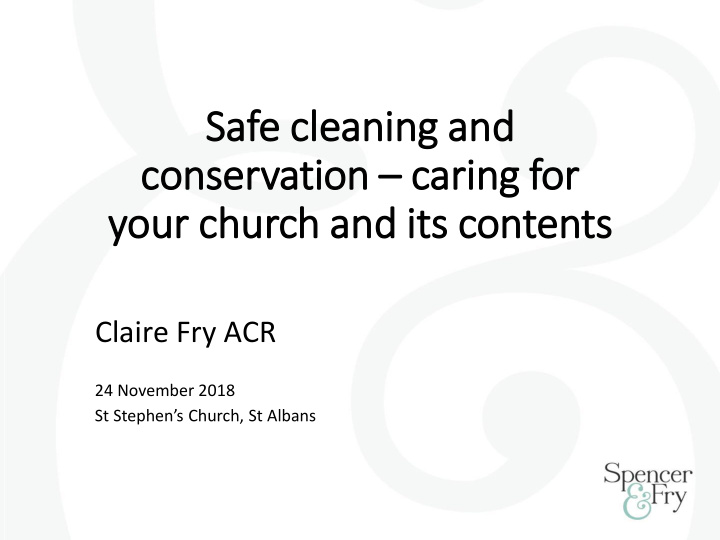



Safe cle cleanin ing and conserv rvation – cari ring for r your r ch church and its its contents Claire Fry ACR 24 November 2018 St Stephen’s Church, St Albans
Dust
Pests
https://www.english- heritage.org.uk/siteassets/home/learn/conservation/science/serpentine/ insect- pests-historic-houses-poster.pdf
Cleaning • But…cleaning can also cause damage.
Wood • Remove dust with microfibre cloth or brushes • Polishing should be infrequent – Use good furniture wax – not a spray polish – Can be buffed with soft cloth/ chamois • Metal cleaning products can damage wood so just buff metal with a dry cloth. • Try to maintain a stable humidity.
Metals • Wear gloves to handle • Avoid contact with wool, silk and leather • Avoid damp environments • Remove dust with soft cloth or brush • Light tarnish can be removed with a silver cloth • Heavy tarnish can be removed with silver dip. • BUT avoid frequent cleaning
Books • To remove dust from the top edge of a book, hold the volume firmly shut and brush the edge gently from spine to fore-edge using a soft brush. • Leather ’dressings’ are not generally recommended - these can easily cause a book to become sticky, will attract dirt and may stain. • The best way to prevent leather from drying out is to control the environment.
Textiles • Keep out of direct sunlight and keep light exposure to a minimum. • Remove dust with ponyhair brush or vacuum on very low suction.
English Heritage
Stone • Remove dust with a brush • Can wet clean, but best to get advice from a conservator first
Leave conservation to the experts…
conservationregister.com
Managing environmental conditions
Any questions?
Recommend
More recommend